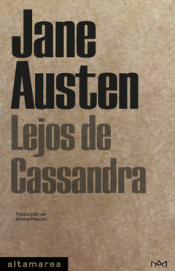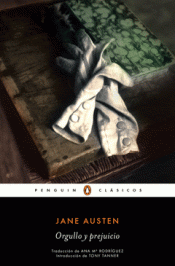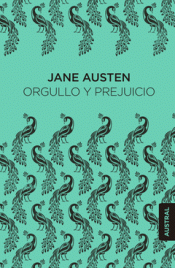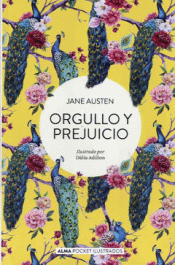A pesar de ser considerada una escritora conservadora, Jane Austen vivió las primeras manifestaciones feministas de la mano de Olimpia de Gouges y Mary Wollstonecraft, que influyeron para que su obra enfocara las cuestiones sociales desde un prisma distinto al habitual para la época. Feminista o no, adelantada a su tiempo o no, a través de personajes como Elizabeth Bennet, la protagonista de Orgullo y prejuicio, reivindicó a la mujer como dueña de su vida. Esta edición incluye: - Cientos de anotaciones realizadas por Patricia Meyer Spacks acerca cuestiones históricas y culturales para explicar las convenciones del periodo de la Regencia. - Una introducción en la que se aborda la vida de Jane Austen, su obra, y el atractivo perdurable de Orgullo y prejuicio. - Profusas imágenes como grabados de las ediciones ilustradas, fotogramas de películas y series de televisión basadas en el libro e ilustraciones de época. - Un apéndice final de Lecturas adicionales para profundizar en Jane Austen, su vida y su obra.
ORGULLO Y PREJUICIO (EDICIÓN ANOTADA)
AUTOR/A
AUSTEN, JANE
Jane Austen (16 December 1775 ? 18 July 1817) was an English novelist whose works of romantic fiction, set among the landed gentry, earned her a place as one of the most widely read writers in English literature. Her realism and biting social commentary have gained her historical importance among scholars and critics.<BR><BR>Austen lived her entire life as part of a close-knit family located on the lower fringes of the English landed gentry. She was educated primarily by her father and older brothers as well as through her own reading. The steadfast support of her family was critical to her development as a professional writer. Her artistic apprenticeship lasted from her teenage years into her thirties. During this period, she experimented with various literary forms, including the epistolary novel which she then abandoned, and wrote and extensively revised three major novels and began a fourth.[B] From 1811 until 1816, with the release of Sense and Sensibility (1811), Pride and Prejudice (1813), Mansfield Park (1814) and Emma (1816), she achieved success as a published writer. She wrote two additional novels, Northanger Abbey and Persuasion, both published posthumously in 1818, and began a third, which was eventually titled Sanditon, but died before completing it.<BR><BR>Austen's works critique the novels of sensibility of the second half of the 18th century and are part of the transition to 19th-century realism. Her plots, though fundamentally comic, highlight the dependence of women on marriage to secure social standing and economic security. Her work brought her little personal fame and only a few positive reviews during her lifetime, but the publication in 1869 of her nephew's A Memoir of Jane Austen introduced her to a wider public, and by the 1940s she had become widely accepted in academia as a great English writer. The second half of the 20th century saw a proliferation of Austen scholarship and the emergence of a Janeite fan culture.<BR><BR>Biographical information concerning Jane Austen is "famously scarce", according to one biographer. Only some personal and family letters remain (by one estimate only 160 out of Austen's 3,000 letters are extant), and her sister Cassandra (to whom most of the letters were originally addressed) burned "the greater part" of the ones she kept and censored those she did not destroy. Other letters were destroyed by the heirs of Admiral Francis Austen, Jane's brother. Most of the biographical material produced for fifty years after Austen's death was written by her relatives and reflects the family's biases in favour of "good quiet Aunt Jane". Scholars have unearthed little information since.<BR><BR>Wikipedia











